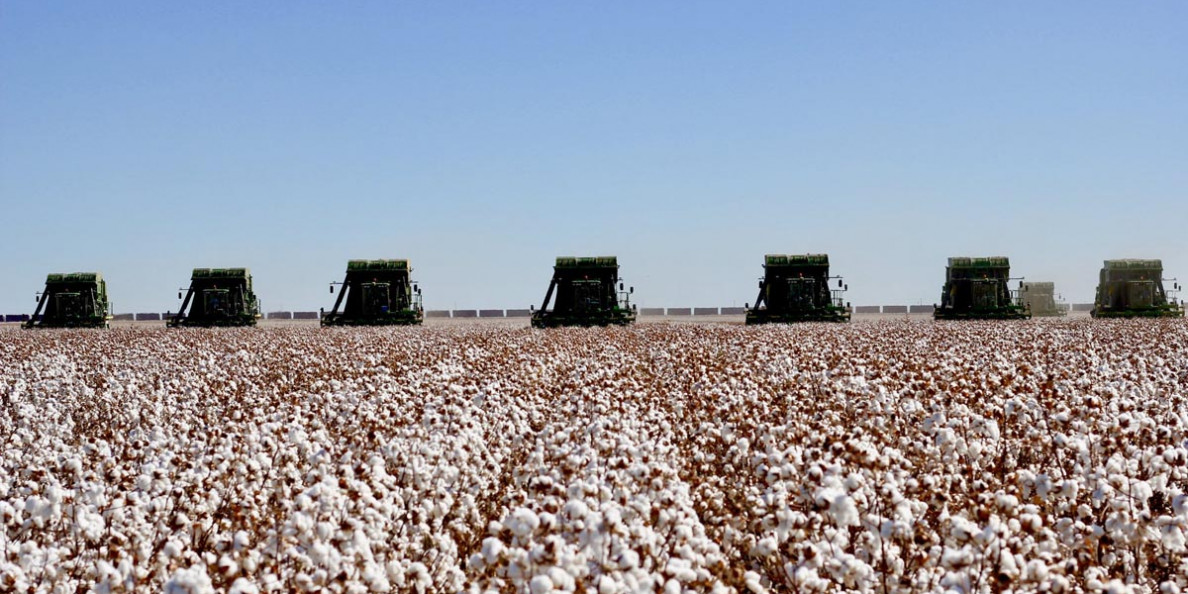By Jeff Thompson, Autauga Quality Cotton
After weeks of steady advances, the market reversed course shedding 237 points this past week with December closing at 61.94. It is yet to be known whether this was a temporary breather in an overbought market or worse. In either case, it did serve as a reminder of two long standing marketing principles.
One, unlike a bear, a bull must be fed daily. Even the previous week’s close above a Fibonacci retracement level wasn’t enough to maintain momentum. In a market looking for direction, fund trading plays an even more significant role.
Managed funds have increased their net long position 11 of the past 12 weeks. Now, long three million bales, it’s their longest position since February 18, 2020, when futures traded at 68 cents. From February 18 to April 21, they went short up to 2.5 million bales pushing futures down to 52 cents.
Having bought the equivalent of five million bales since then has driven futures to their current level at 62 cents. That said, it’s of our opinion, futures won’t break 64 cents unless managed funds continue to buy.
Secondly, history has taught us market rallies cannot be sustained based solely on lower production. Signs of strengthening demand are essential to any prolonged bull market. Crop conditions have not improved. The Southwest was dealt another setback as a torrid heat wave swept across the area. Currently, 41 percent of the Texas crop is rated poor to very poor.
Conversely, the Southeast finds itself in a summertime pattern of random showers, but general enough to maintain the crop for now. Nonetheless, with sweltering temperatures and a later than normal crop, ample rainfall will be desperately needed going forward.
Then again, the bullishness of a short crop means nothing if demand is not present. For weeks now, China’s renewed buying of U.S. cotton gave the perception consumption might be on the rise. This week’s export sales better portray the true demand picture.
Old crop sales of a negative 17,500 bales were the result of a 38,600-bale cancellation by China. Even when combining new crop, net sales were a paltry 11,600 bales.
COVID-19 continues to be the anvil hanging over the economy and consumer spending, thus cotton consumption. What was hoped to be a quick V-shaped economic rebound now appears to be a more prolonged one, at best.
Following weeks of partial reopenings, several states are now seeing record one-day totals in new COVID-19 cases as the second wave hits or simply a continuance of the first one. Nevertheless, large states such as California, Texas, and Florida are doing everything they can to avoid another economic shutdown by encouraging citizens to safeguard themselves and others.
Also, the CDC is now saying antibodies found in those who have recovered may be short lived, only a few weeks. Regrettably, this casts doubt on the herd immunity theory once thought to be our silver bullet until a vaccine could be found. With so much hinging on the duration of this virus, it goes without saying we can ill afford another economic shutdown.
On a positive note, June’s retail apparel sales were up 105 percent from last month. Coming on the heels of the 177 percent increase in May, retail apparel sales have recaptured 77 percent of the pre COVID-19 sales. This is a promising indication the consumer is poised to return if a resurgence of the virus doesn’t curtail them.
What does this mean for cotton prices?
Considering the market is already trading on a shorter crop, signs of renewed demand will be needed to give prices any upward momentum. While awaiting this, look for prices to fall back into their previous trading range of 60 to 63 cents. Here the market will become a weather and COVID-19 watcher as it seeks direction.


